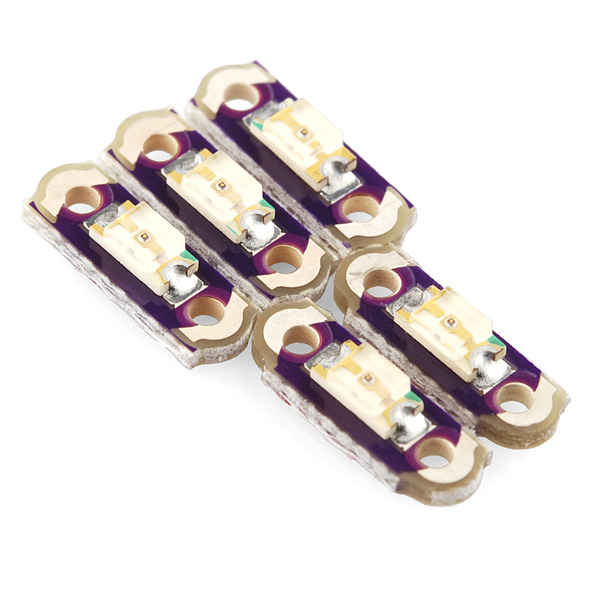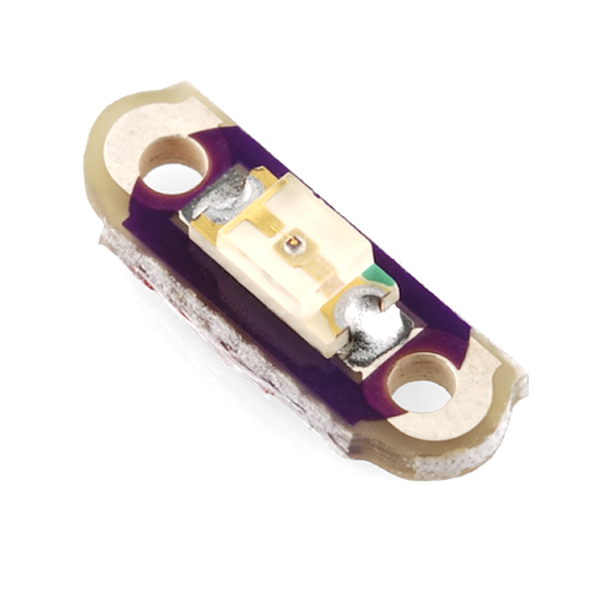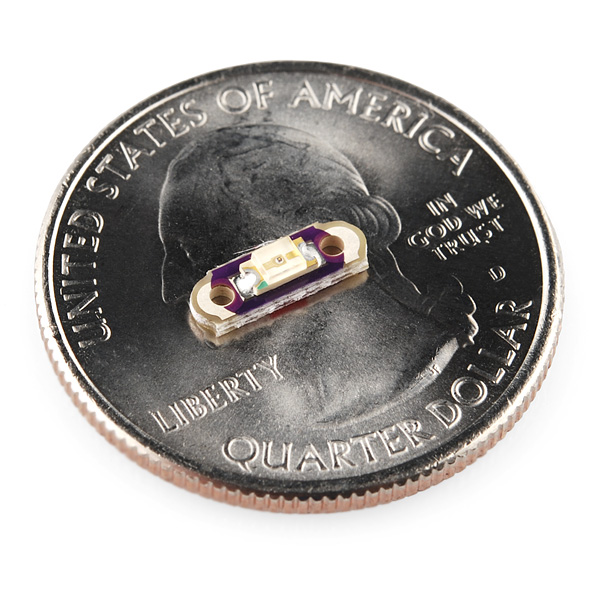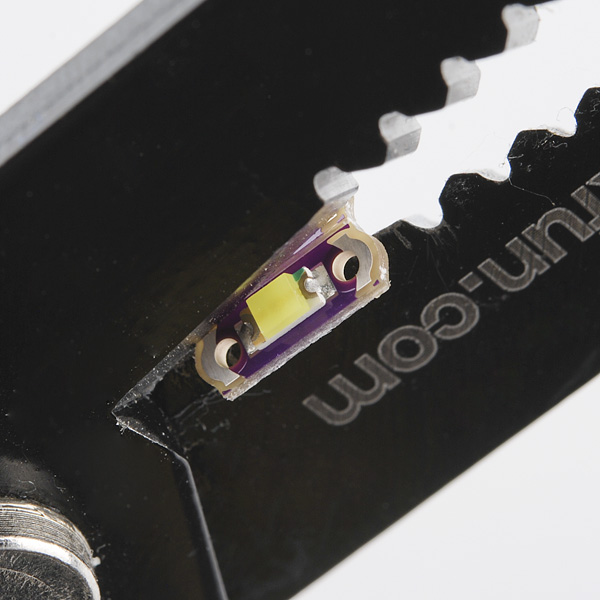LilyPad LED Micro - White (5pcs)
Need a smaller way to add some 'twinkle' to your LilyPad project? Then you need some LilyPad Micros! A LilyPad Micro is like a smaller version of the LilyPad LED board. By eliminating the resistor and changing the orientation of the surface mount LED we've shrunk the board down which looks great in elegant designs or on sheer fabrics where you don't need the extra weight or exposed board space. It's really the closest you can come to sewing a point of light directly to your project.
**Note: **Because the board don't include a current-limiting resistor, it is possible to over-power them and possibly burn them up. The high resistance of conductive thread can help protect the Micros from high current, so long stitches can be used with most power sources to keep the power levels 'Micro-friendly'. If you aren't sure where to start with resistance and current, using these in conjunction with a LilyPad Simple or Main Board is a great place to start, because they both have built-in current limiting and can't burn up your Micros.
Note: These are sold in strips of five boards which can be snapped apart with wire cutters, flush cutters or scissors. Some, however, may come as loose pieces that are already snapped apart.
Note: A portion of this sale is given back to Dr. Leah Buechley for continued development and education of e-textiles.
LilyPad LED Micro - White (5pcs) Product Help and Resources
Origami Paper Circuits
May 26, 2015
A quick tutorial to get you started in the world of light up origami flowers.
Core Skill: DIY
Whether it's for assembling a kit, hacking an enclosure, or creating your own parts; the DIY skill is all about knowing how to use tools and the techniques associated with them.
Skill Level: Noob - Basic assembly is required. You may need to provide your own basic tools like a screwdriver, hammer or scissors. Power tools or custom parts are not required. Instructions will be included and easy to follow. Sewing may be required, but only with included patterns.
See all skill levels
Core Skill: Electrical Prototyping
If it requires power, you need to know how much, what all the pins do, and how to hook it up. You may need to reference datasheets, schematics, and know the ins and outs of electronics.
Skill Level: Rookie - You may be required to know a bit more about the component, such as orientation, or how to hook it up, in addition to power requirements. You will need to understand polarized components.
See all skill levels
Comments
Looking for answers to technical questions?
We welcome your comments and suggestions below. However, if you are looking for solutions to technical questions please see our Technical Assistance page.
Customer Reviews
No reviews yet.






Can you tell me, are these LEDs warm white or cool white? I'm looking for cool white and these look to be perfect for the project if that's what they are.
Cool! Glad that they'll work!
That's "they're cool blue" or "it's cool that they'll work?" :-)
They are cool white LEDs, and I'm pleased that they're what you're looking for <3
Thanks for the quick replies! <3 SparkFun :-)
I did not find the note about over-powering to be accurate. I'm using a LilyPad Main Board, and my micro LEDs melted the polyester I sewed them onto. With only three lights in parallel (each with its positive terminal connected to a LilyPad pin and its negative connected to ground), the combined current of the three lights at 100% duty cycle overheated the thin stainless thread I used. The circuits measure about 11ohms, so 3.3V drives ~300mA through each light (15x rated capacity). Unless you have very low duty cycle (~5%), you MUST use a current-limiting resistor to prevent material failure.
Also, Sparkfun, you could solve this problem by offering the current-limiting resistor in its own LilyPad-style packaging for use with multiple micros. Love what you're doing with wearable electronics. Keep it up! :)
Oof, sorry to hear about that! Thanks for sharing your experience though. I know personally I never would have considered the possibility of my fabric melting due to the higher current.
Maybe this will save some people a trip to the datasheet: 3.3v 20ma 250mcd viewing angle 120 degrees (nice!)
I measured them at roughly 9mm x 3mm x 1.5mm high. It really is a nice, easy to work with package.
How big (small) is this?
Anyone...???
Small! About 9mm x 3mm x 1.5mm high.
Err... That would be 'sheer' fabrics. Entirely different thing, and potentially less painful.
well, you gotta cut it somehow, amirite?
Good save!